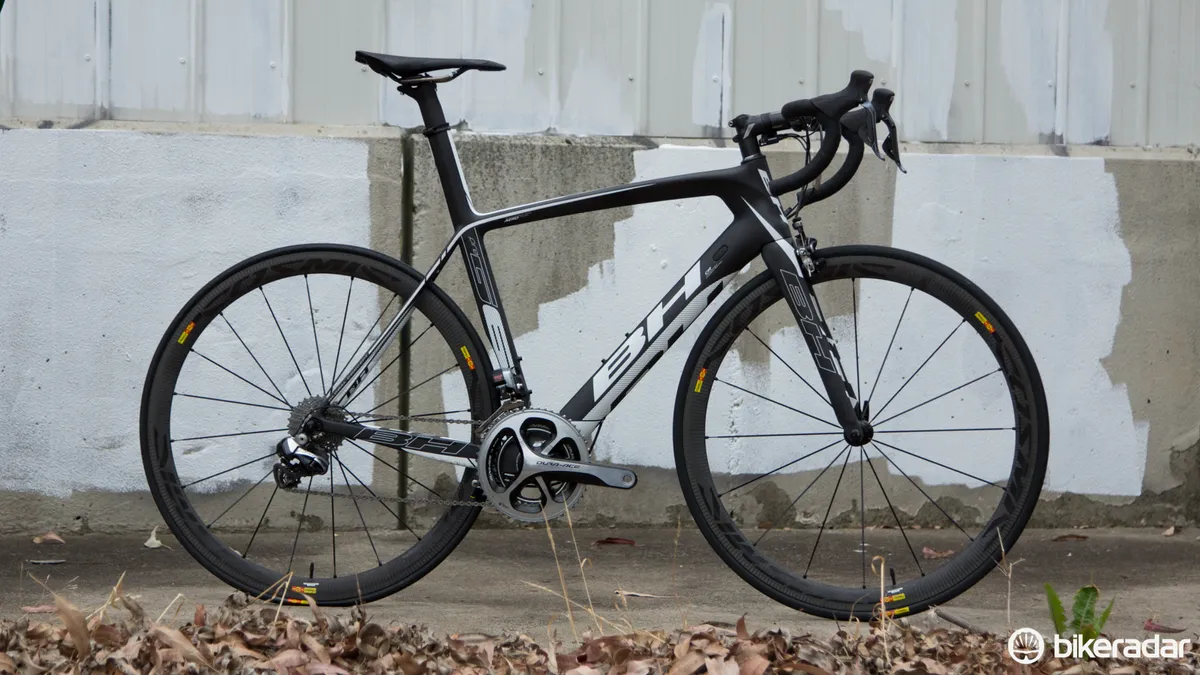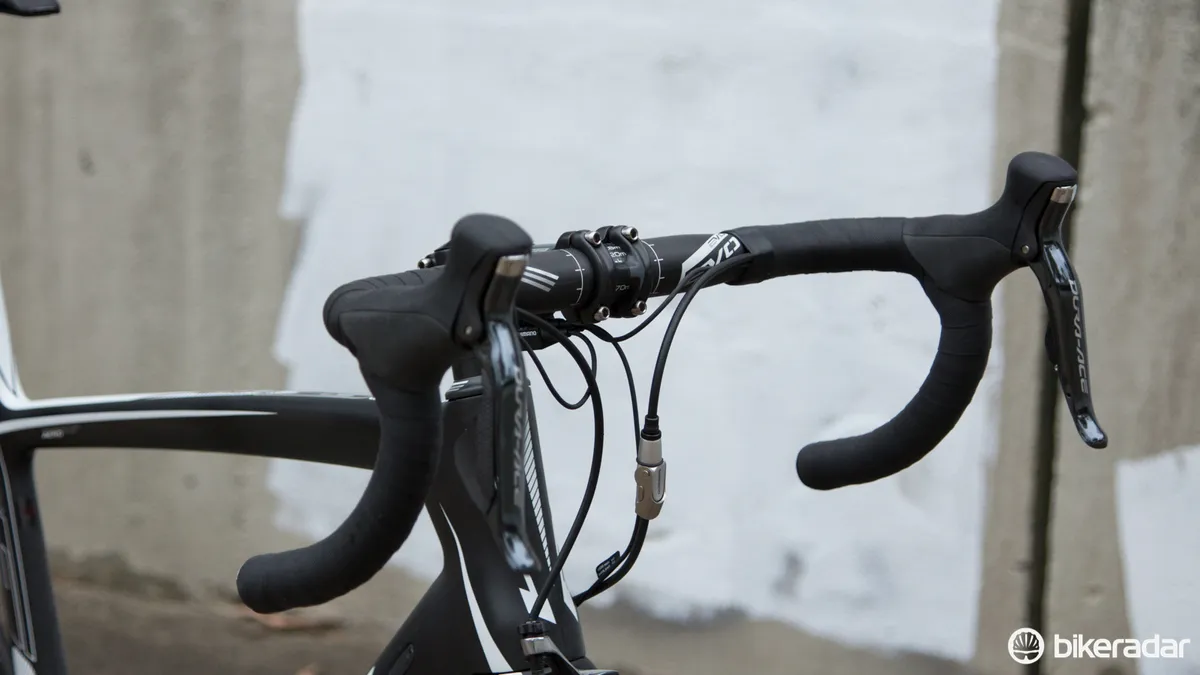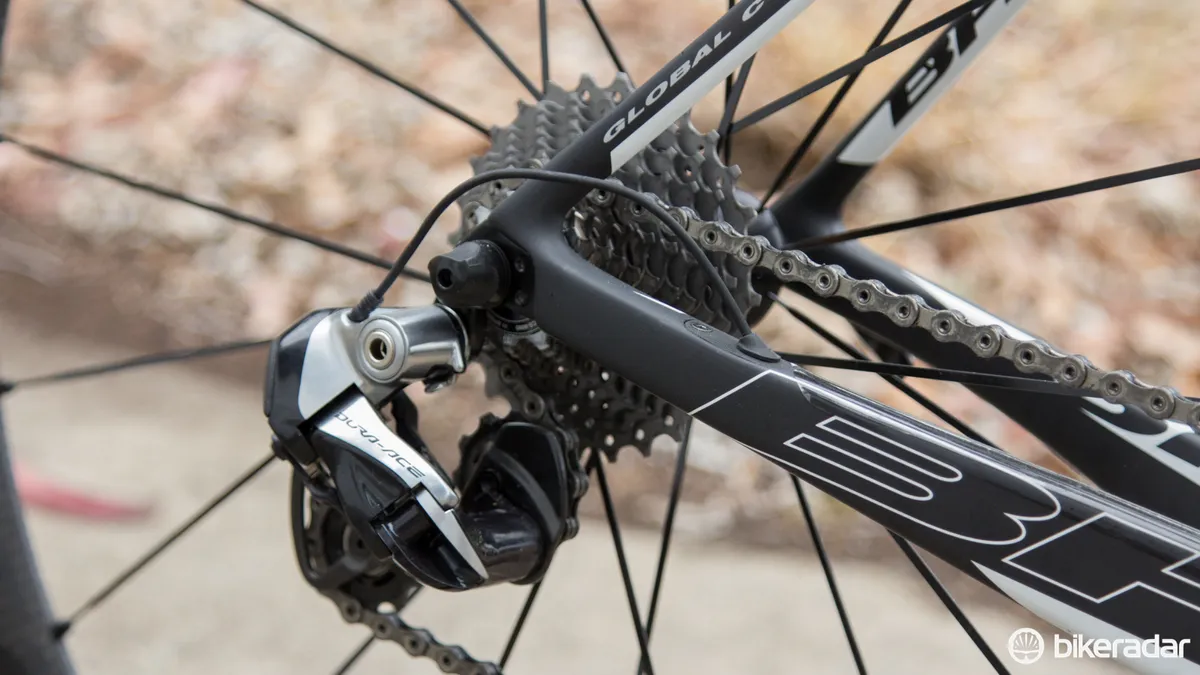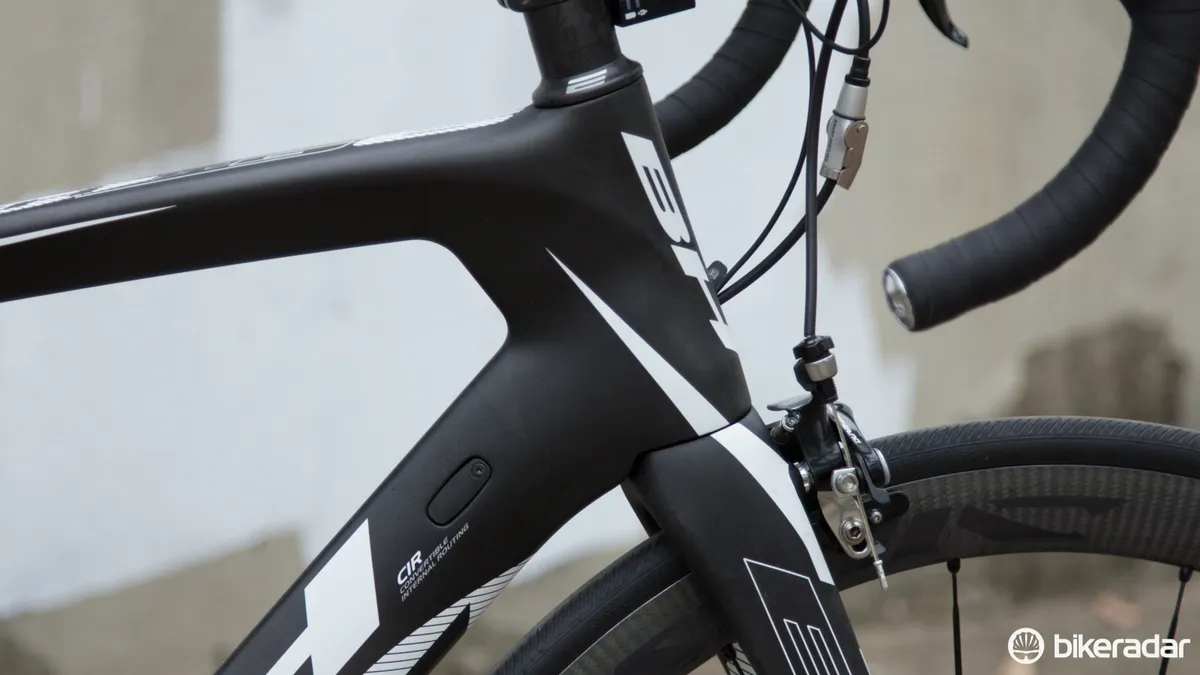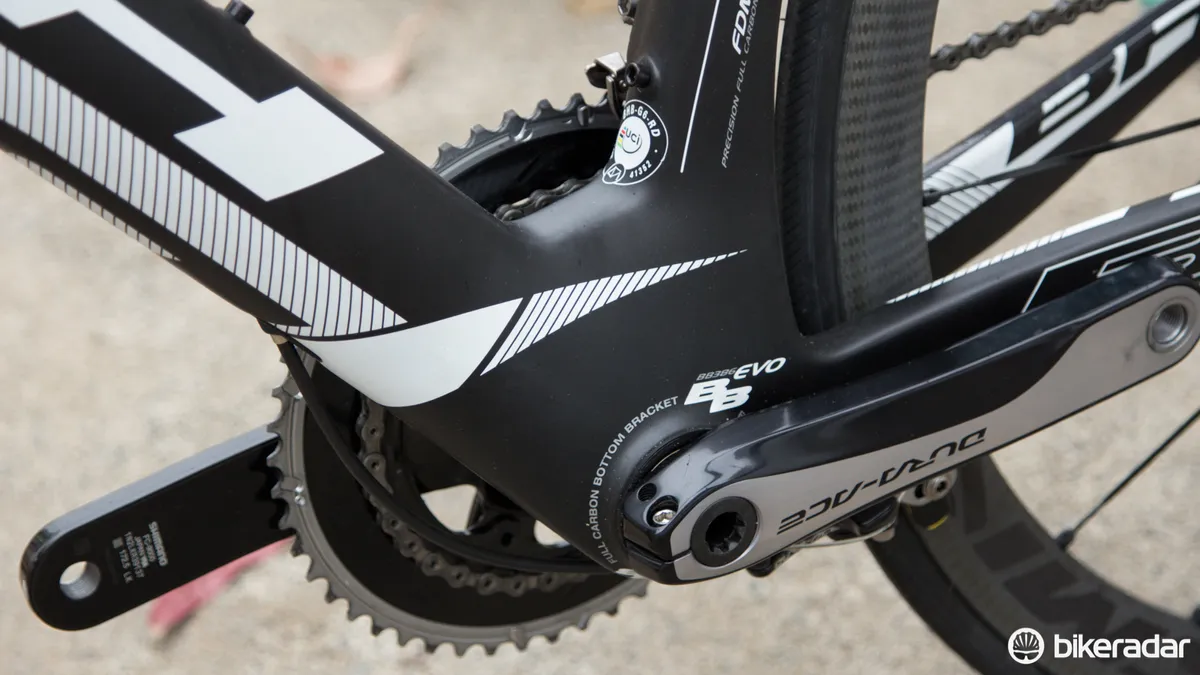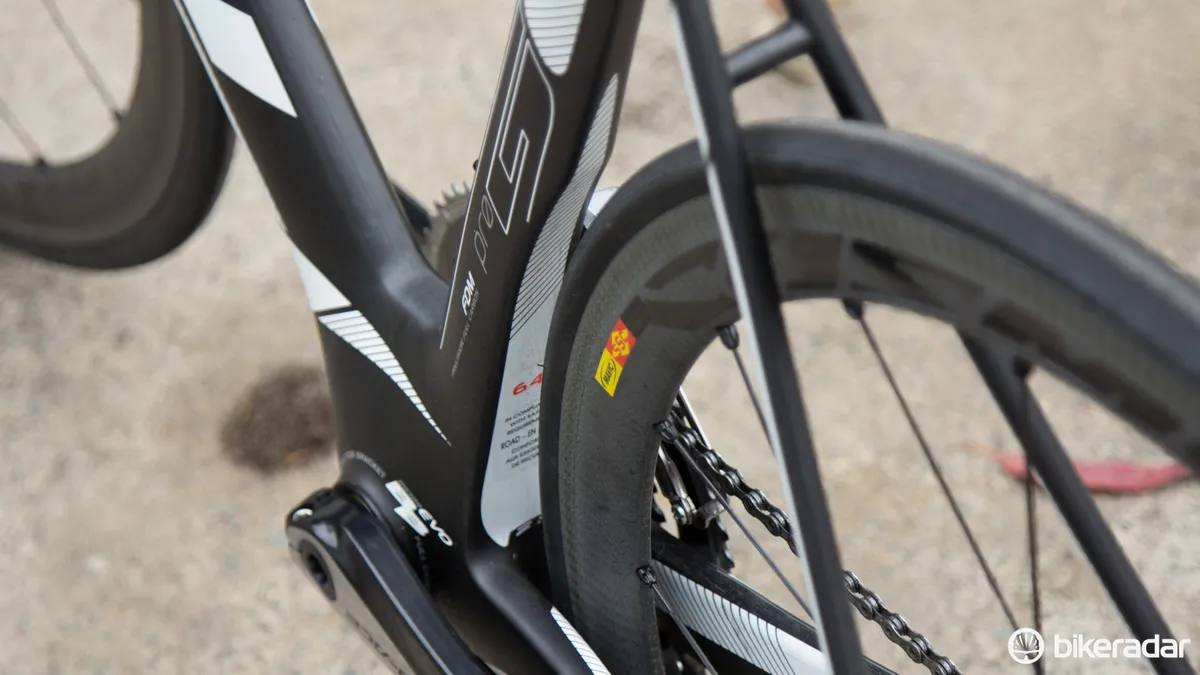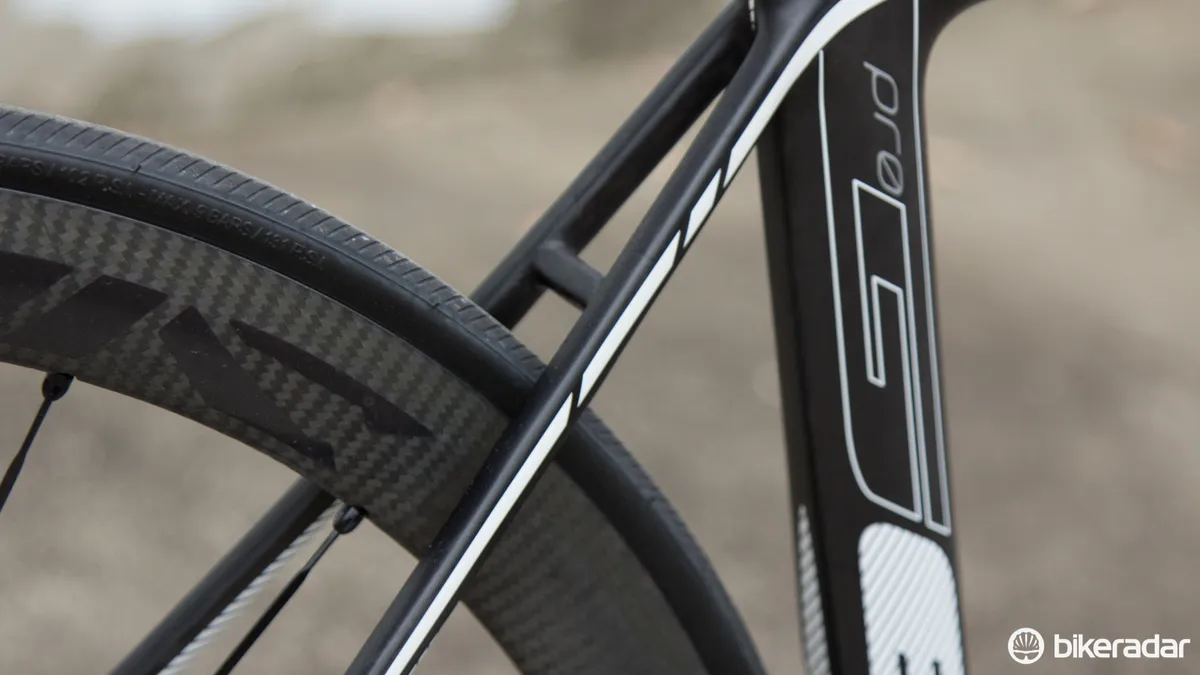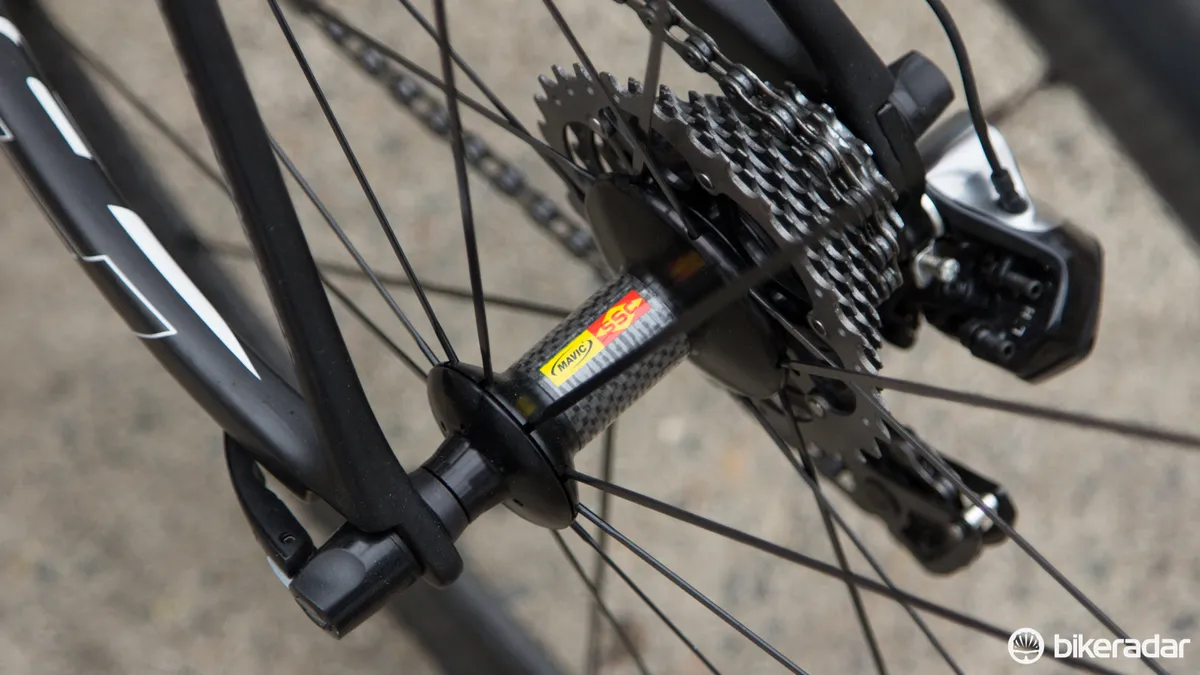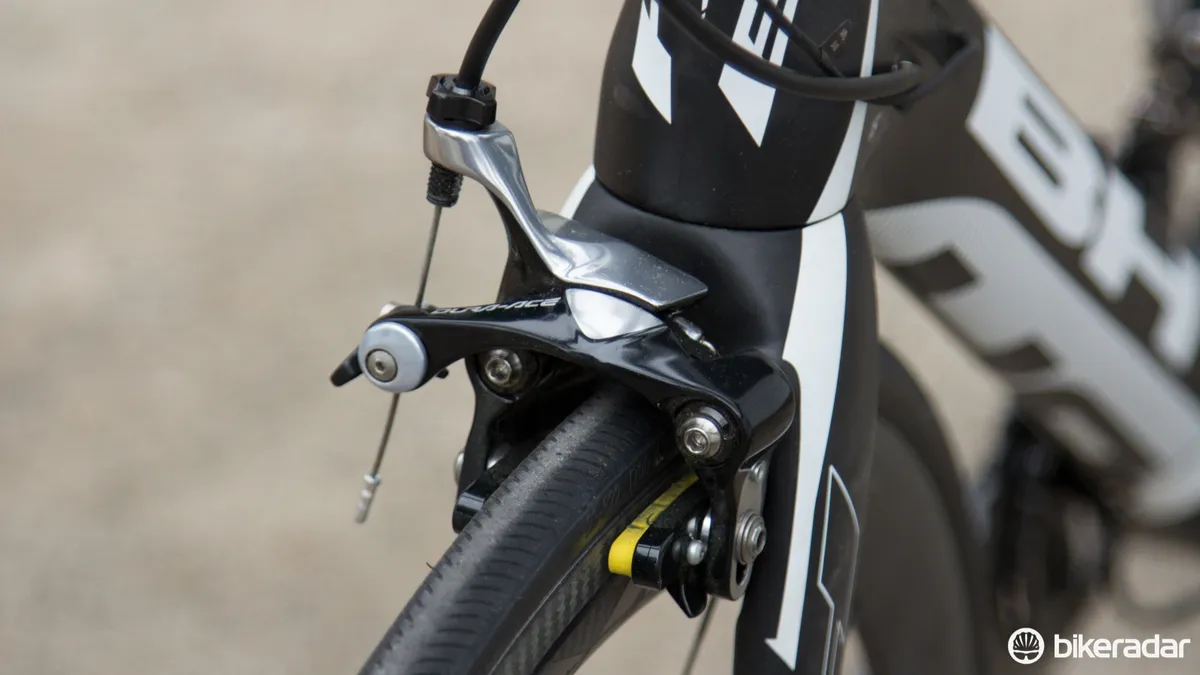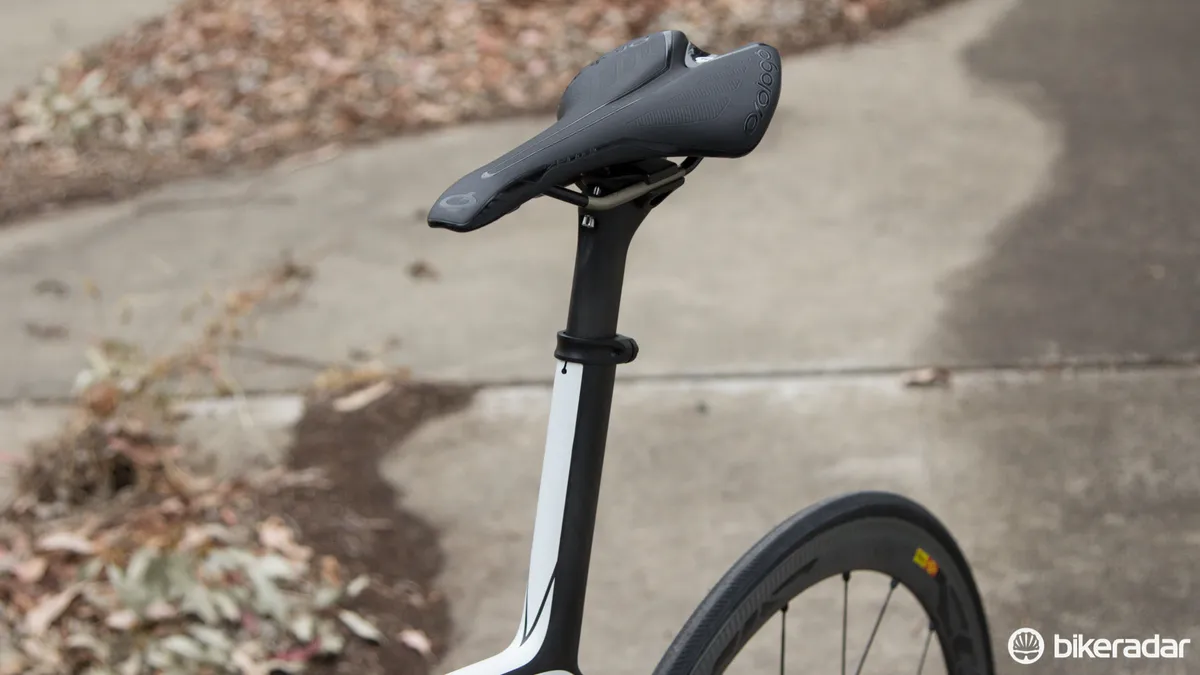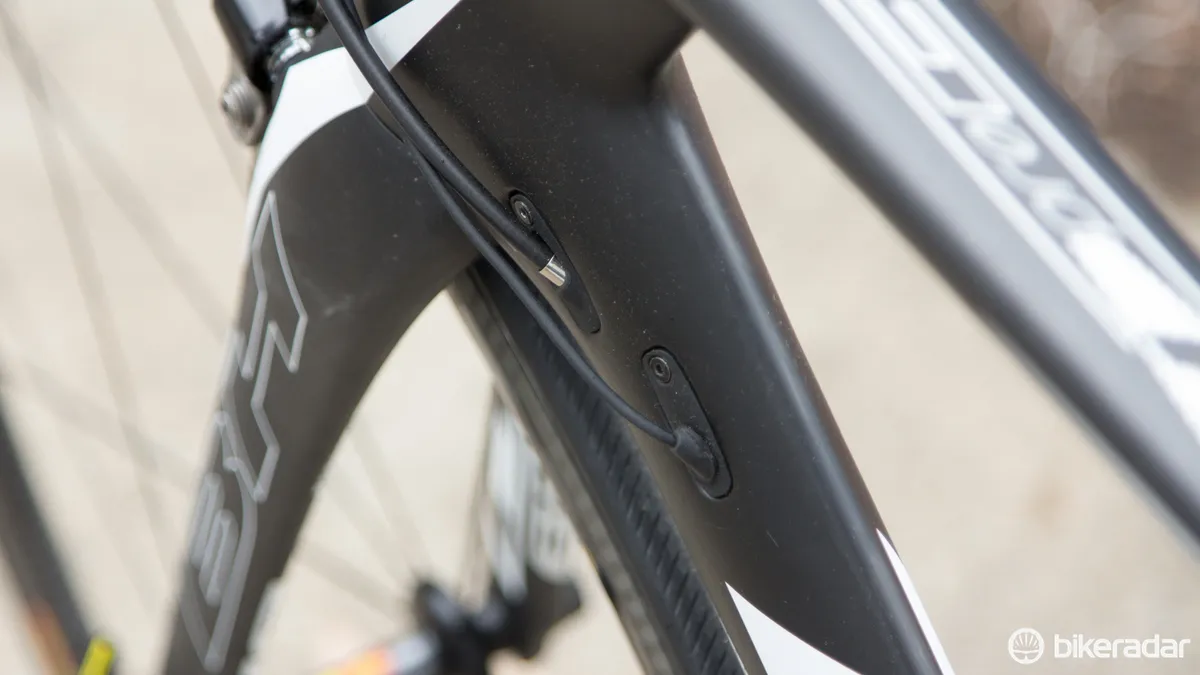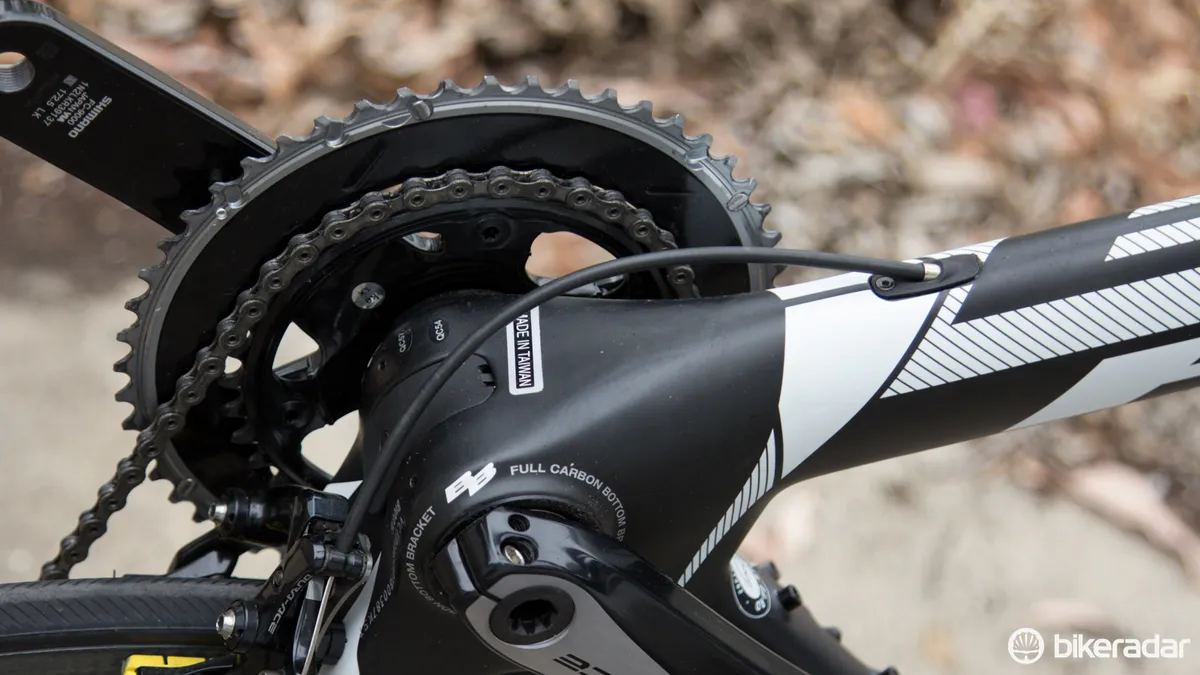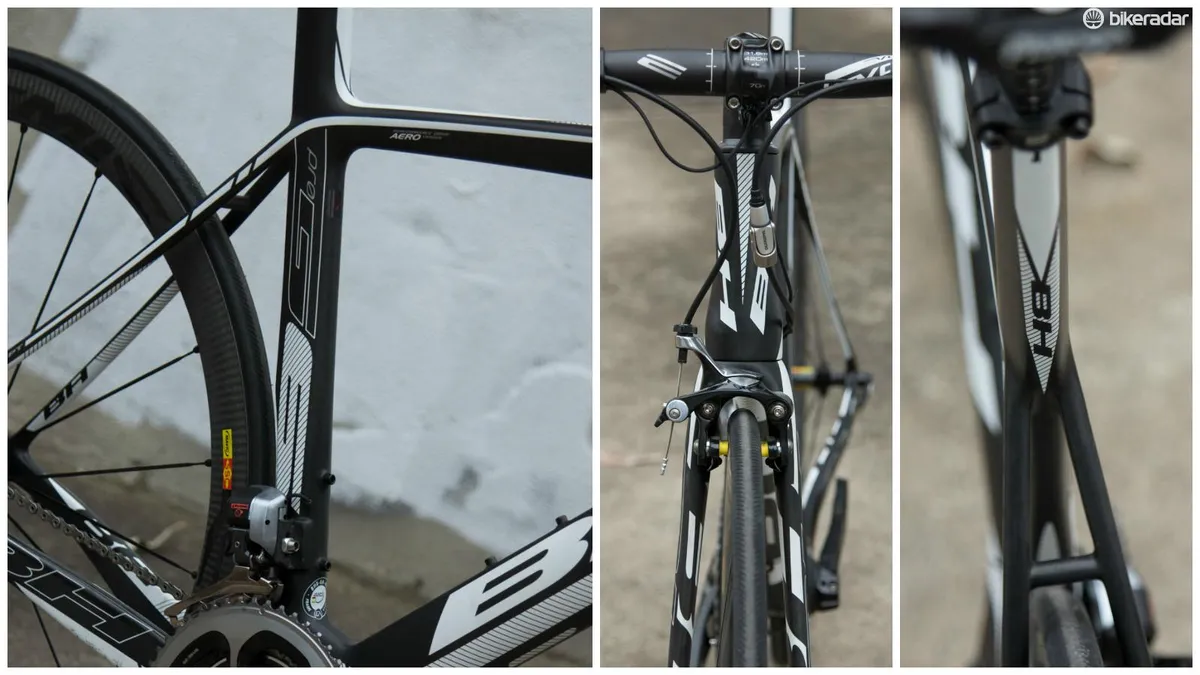BH’s flagship aero road bike has received a few subtle updates for 2015, with the pre-existing G6 now being topped by the G6 Pro.
As the current crop of aero bikes become ever faster in the windtunnel – and more comfortable to boot – this Spanish-designed rig has big shoes to fill.
- Highs: Low weight for aero, race-ready spec, super model looks
- Lows: Noticeable lateral flex, average crosswind performance, harsh riding wheel combination
Ride and handling: better at speed
With a relatively high bottom bracket, the G6 Pro feels twitchy and nervous in the handlebar tops and hoods, but in the drops, with the centre of gravity lowered and the front wheel properly weighted, the handling quiets down. Given that it's pegged as a racer, it's no surprise the BH is more stable at speed – provided you’re riding in the drops – and in race situations and when descending, it handles solidly and confidently. When you sit up though, you'd better hang on tight because this is one steed that doesn’t like to dawdle.
It's not all smooth sailing when it comes to ride quality either. A bit of road buzz makes its way up through the aero seatpost, taking its toll during longer outings. Dainty chainstays do their best to combat larger impacts, but these efforts are undermined by Mavic's Wheel-Tyre System.
The pointed profile of the Cosmic Carbone clinchers and undersized 23c rubber did little to dampen vibration and impacts. That said, the lightweight Mavic combo provides ample traction and is responsive to acceleration efforts.
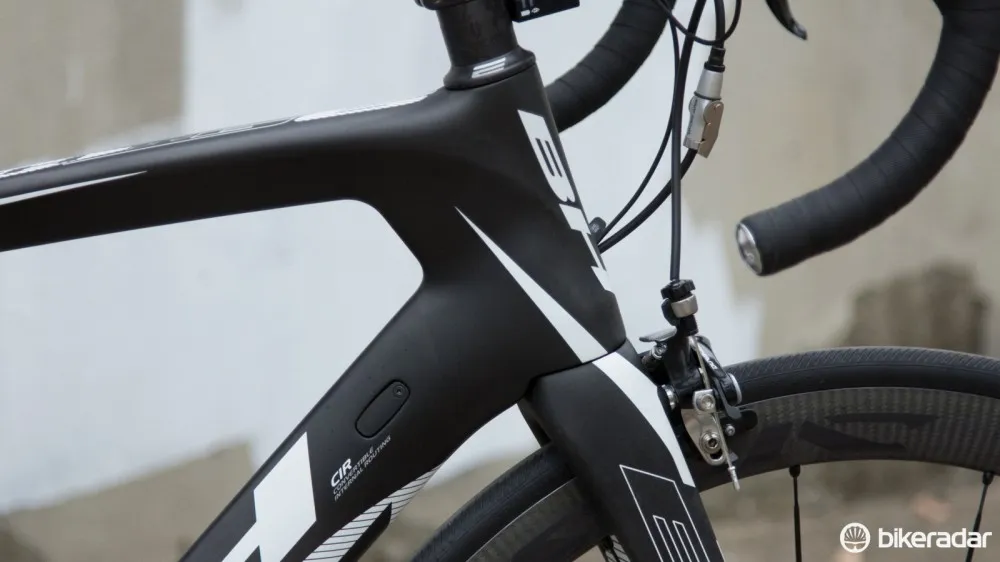
The G6 Pro has some radical tube profiles
Riding in sidewinds the G6 Pro again falls victim to the pointed profile of the Cosmic Carbone wheels. Despite their modest depth, gusts and swirling crosswinds cause buffeting, requiring some focus to hold a line. Testing with more conservative rolling stock brought about improvements in both ride quality and crosswind stability.
Accelerations are quick, but don’t match the breakneck speed of the previously tested BH Ultralight. The mass of material at the bottom bracket creates a solid platform for putting the power down, but we detected a hint of give when really stomping on the pedals.
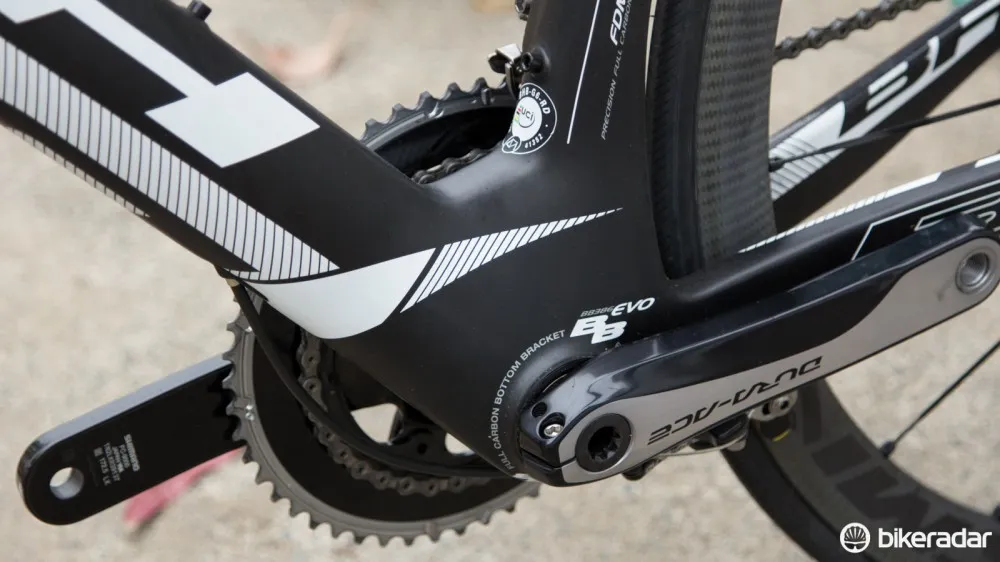
There's plenty of material surrounding the BB386EVO bottom bracket
It’s obvious the G6 Pro has been designed with minimum wind resistance in mind,but the slender tube profiles don't provide the necessary brawn to prevent the top tube from twisting during seated efforts. While this doesn't greatly affect handling, there is noticeable movement if you try to emulate a Jens Voigt-style attack.
Our size medium sample featured a long 55.7cm top tube, which many other brands would label a medium/large – make sure you bear this in mind. BH only offers the G6 Pro in five sizes, which is lacking compared with most other options at this level.
Frame and equipment: one pimped-out ride
For the updated model, BH used the same frame cast as the previous G6, but a new carbon layup shaved 80g off the frame for an impressive claimed weight of just 860g, including a lifetime warranty and with no rider weight limit.
This weight reduction was achieved in part through the use of HCIM (Hollow Core Internal Molding) technology, which, according to BH, makes for a clean internal surface with no excess (read: unwanted) material left inside the tubing.
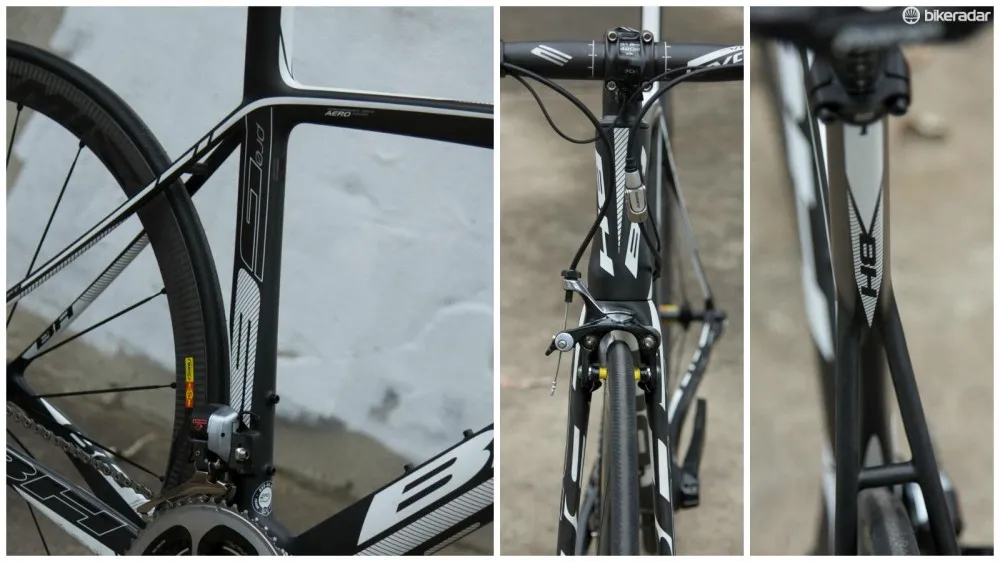
The G6 Pro features slender tube profiles throughout
BH also claims an increase in rear end and head tube frame stiffness, along with improved shifting performance, thanks to the refined internal cable routing (something we were unable to test given our Di2 spec), and has incorporated an internal Di2 battery.
From the front, the G6 Pro appears razor-thin and ready to cut through headwinds. This skinny profile is accompanied by elongated trailing edges, some of which are bordering on aerofoils. Sadly, BH provides little information about its aero testing and, as far as we can tell, the G6 Pro hasn't seen a wind-tunnel during its development.
As we mentioned previously, these narrow aero profiles come at the cost of torsional stiffness, something that's both felt and seen at the top tube and seat tube junction.
The G6 Pro's interchangeable cabling routing is equally accepting of electronic and mechanical drivetrains. In an attempt to futureproof the new model, the rear brake cable guide is removable, opening it up to subsequent hydraulic brake options if they become a ‘thing’.
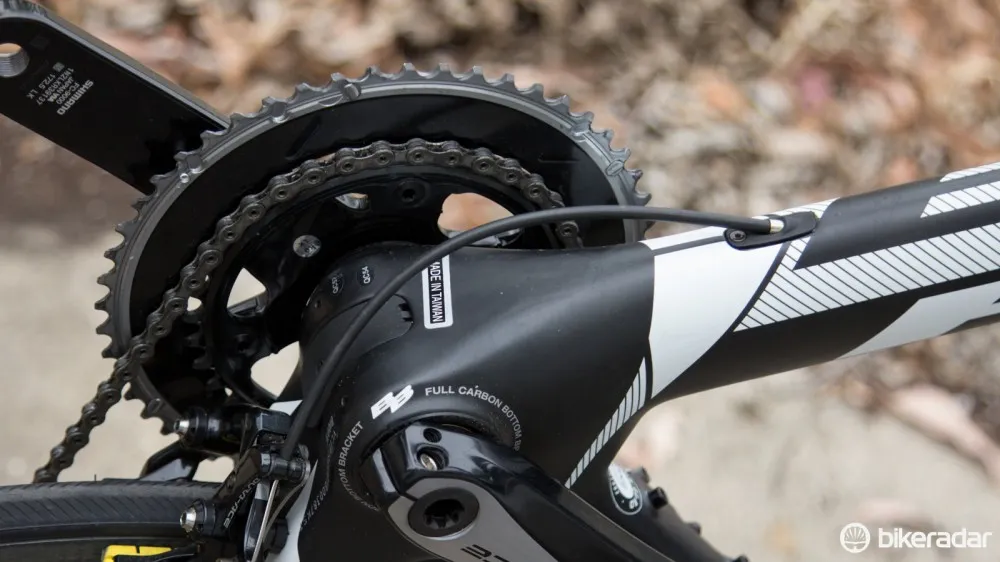
A big loop of housing is needed to reach the rear brake
We were not, however, particularly happy with the cable entry ports on the frame. The Di2 wire enters the down tube some 14cm from the head tube. While there's no direct effect on performance, it leaves a lot of wire exposed and it seems there should be a cleaner solution – at the very least, get the wire shrink-wrapped to the brake cable.
Speaking of brakes, Shimano’s Dura-Ace direct mount models set the benchmark, providing plenty of power at the lever. Even in riding conditions that just about required a snorkel, braking on the Mavic carbon rims offered excellent stopping power and modulation.
However, with the rear brake placed under the bottom bracket, the cable must be routed through the down tube, which creates a long loop before the brake. This creates more friction at the lever compared with the front brake, and noticeable compression – though this is something that can likely be remedied by moving to a compressionless housing system.
The direct mount brake design also makes for a tight squeeze between the left crank arm and the brake clamp, meaning that the use of some crank-based power meters such as Stages and Pioneer may not be possible.
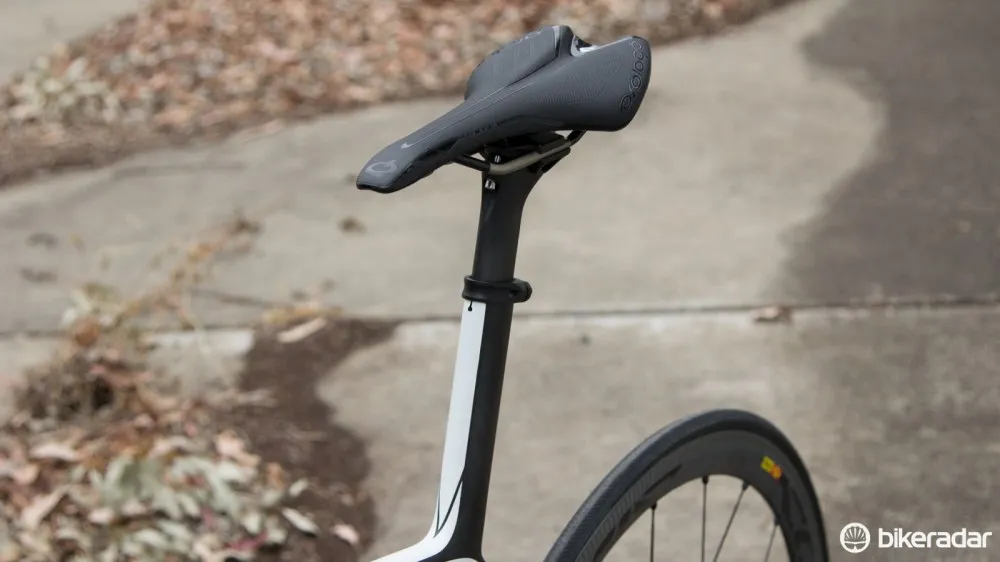
The G6 Pro features a unique seatmast system
The G6 Pro features an interesting semi-integrated adjustable seat mast. Extending out of the frame, an internal post exists for finite adjustments. We had no issues with the solid two-bolt seat clamp, even when tightened below the recommended torque. Riders with short legs be weary as the the seat mast cannot be cut to accommodate a lower saddle height, however for most, a properly sized frame should not cause an issue.
As featured on all current BH road frames, the BB386EVO bottom bracket standard creates a sizable BB area and allows for a plethora of crank options (just about all except standard BB30).
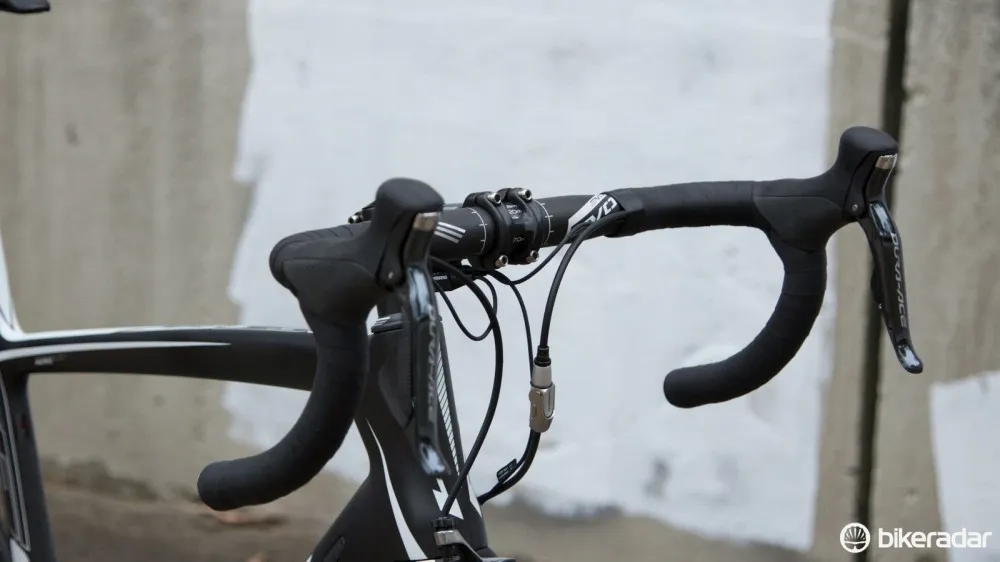
The EVO carbon bars are lighweight, stiff and feature a traditional round profile
The spec (Australian only) of our sample G6 Pro was about as tricked out as they come. The internal-battery Dura-Ace Di2 drivetrain performed flawlessly, while the combination of an FSA OS-99 stem and BH’s in-house EVO Wing Carbon bars made for a feather light and stiff cockpit. It’s also worth noting the EVO wing carbon bars are round, meaning clip on aero bars for triathletes are no sweat.
The Ultralight we tested last year came with a full carbon Prologo C.ONE Nack Carbon saddle, but the G6 sports a Prologo Zero2, which will suit a wider range of riders. And unlike the saddle of the Ultralight we tested, this saddle’s metal rails are a wise choice, as you don’t want to be paying extra for an item you’ll likely swap out due to preference.
All up, the G6 Pro weighs in at a respectable 6.73kg (without pedals) and looks pretty great to our eyes. The dramatic aero tube shapes, deep-dish carbon wheels and classic black and white paintjob all add to its air of menacing prowess.
There's no doubt the BH G6 pro is a race-ready machine, with an aggressive geometry and top end (Australian) spec; however, we were left wanting a little more. The Ultralight went above and beyond, showing us what BH is capable of, while the G6 Pro isn't quite the pinnacle it’s pitched to be in a market booming with aero race options – especially when you consider its daunting price.
Note: We tested an Australian specific version of this bike. While the BH G6 Pro frame is the same globally, build specs and prices will vary depending on location.
